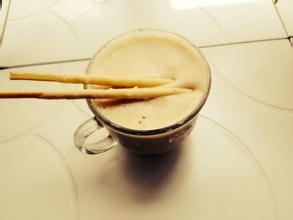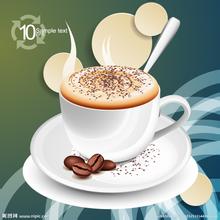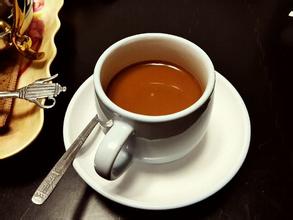Introduction to Renas Manor in El Salvador Coffee Manor Flavor planting Environment
El Salvador was originally inhabited by the Mayan Indians.
Scenery of the Republic of El Salvador
Scenery of the Republic of El Salvador
It was colonized by Spain in 1524.
Independence was declared on September 15, 1821 and later became part of the Mexican Empire.
In 1823 the empire collapsed and El Salvador joined the Union of Central America.
The Republic was proclaimed on February 18, 1841 after the disintegration of the Union in 1838.
Since the 1930s, soldiers have launched coups many times, and the political situation has been in turmoil for a long time.
Martinez became vice president and defense minister in 1931, during the Great Depression, political corruption and the rapid expansion of the influence of the Communist Party of El Salvador. Arturo Araujo was forced to step down and nominated Martinez as the next president.
In January 1932, local elections began, and a large number of Communist Party candidates were elected, but they were not recognized by the government; the Communist Party of El Salvador decided to launch an uprising on the 22nd, but Martinez discovered it and immediately ordered the arrest of Communist Party leader Farah Bendo Marty. The leaderless farmers, armed with machetes, launched the uprising as scheduled, but failed under the crackdown by government forces, which immediately retaliated and slaughtered more than 30,000 rebellious farmers.
For 13 years after 1932, El Salvador was ruled by Martinez.
On May 19, 1934, El Salvador announced the establishment of diplomatic relations with Manchukuo, becoming the second country after Japan to recognize the regime.
After the outbreak of the Pacific War in 1941, El Salvador joined the anti-axis camp of Britain, the United States and other countries.
In April 1944, intellectuals and students launched a general strike because of economic paralysis.
In May 1945, Martinez stepped down, went into exile in Guatemala and then went to live in Honduras.
When the reformist revolutionary junta came to power in 1979, both the far right and the far left were dissatisfied with the government, and the conflict broke out and turned into a civil war.
In 1980, a formal civil war broke out in El Salvador, confronting the United States-backed government and the Cuban-backed Farabundo Marti National Liberation Front.
On January 16, 1992, the Marty Front signed a "peace agreement" with the government, ending the 12-year civil war in El Salvador.
In March 2014, El Salvador held the second round of presidential election. Vice President Salvador Sanchez Salon, candidate of the ruling Marty Front, won with 50.11% of the vote and was sworn in on June 1. 5-year term of office: balanced taste and good texture
Recommended baking method: moderate to deep, with a variety of uses
Top quality beans: El Salvador SHB
Taste characteristics: sour, bitter, sweet mild and moderate.
Salvadoran coffee ranks side by side with Mexico and Guatemala as the producers of Asa and Merdo, and is fighting for the top one or two places in China and the United States with other countries. The highlands of origin are large coffee beans of all sizes, which are fragrant and mild in taste. Like Guatemala and Costa Rica, coffee in El Salvador is graded according to altitude. The higher the altitude, the better the coffee. It is divided into three grades according to elevation: SHB (strictlyhighgrown) = highlands, HEC (highgrowncentral) = mid-highlands, and CS (centralstandard) = lowlands. The best brand is Pipil, the Aztec-Mayan name for coffee, which has been recognized by the American Organic Certification Society (OrganicCertifiedlnstituteofAmerica). In the early 1990s, guerrilla warfare greatly damaged the country's national economy, reducing coffee production from 3.5 million bags in the early 1970s to 2.5 million bags in 1990-1991. The eastern part of the country was most affected by guerrilla warfare, and many farmers and workers were forced to leave the manor. The shortage of funds has led to a sharp drop in coffee production, from 1200 kg per hectare in the past to less than 900kg per hectare today.
In addition, the government imposed an additional 15% tariff on exported coffee in 1986, that is, an additional 15% in addition to the existing 30% tax. Taxes, together with unfavorable exchange rates, have greatly reduced the export of coffee and the quality of coffee.
The government finally realized the great role of coffee in the national economy, such as solving employment, earning foreign exchange and developing agricultural production, so it privatized some coffee export industries in 1990, hoping to increase the income rate of coffee in the export market.
Today, this coffee accounts for 40% of the country's exports. The best quality coffee is exported from January to March, and 35% of the extra hard beans are exported to Germany.

Important Notice :
前街咖啡 FrontStreet Coffee has moved to new addredd:
FrontStreet Coffee Address: 315,Donghua East Road,GuangZhou
Tel:020 38364473
- Prev

Guatemala Inchter Estate Coffee with Good Sour Flavor Taste Introduction to Growing Environment
This Government of Guatemala was formed in January 2012. The main members are: Vice President Rosana Valdetti, Foreign Minister Araud Caballeros, Interior Minister Mauricio Lopez Bonilla, Defense Minister Ulisno Esoedogiron, Finance Minister Pavel Centeno, Transport and Infrastructure Minister Guillermo Castillo, Education Minister Cynthia del Agui
- Next

Introduction to the flavor and taste of the growing environment of boutique coffee beans in Kimmel Manor, Rwanda
Rwanda has many mountains and is known as the country of a thousand hills. The whole country is at a high altitude: the lowest point, the Luzizi River, is also 950 meters above sea level. The Midwest is dominated by mountains, which are part of the Aberdeen Rift Valley, which is part of the East African Rift Valley, extending from north to south along the western border of Rwanda. The highest mountain in the country is located in the northwest of Wei.
Related
- Does Rose Summer choose Blue, Green or Red? Detailed explanation of Rose Summer Coffee plots and Classification in Panamanian Jade Manor
- What is the difference between the origin, producing area, processing plant, cooperative and manor of coffee beans?
- How fine does the espresso powder fit? how to grind the espresso?
- Sca coffee roasting degree color card coffee roasting degree 8 roasting color values what do you mean?
- The practice of lattes: how to make lattes at home
- Introduction to Indonesian Fine Coffee beans-- Java Coffee producing area of Indonesian Arabica Coffee
- How much will the flavor of light and medium roasted rose summer be expressed? What baking level is rose summer suitable for?
- Introduction to the characteristics of washing, sun-drying or wet-planing coffee commonly used in Mantenin, Indonesia
- Price characteristics of Arabica Coffee Bean Starbucks introduction to Manning Coffee Bean Taste producing area Variety Manor
- What is the authentic Yega flavor? What are the flavor characteristics of the really excellent Yejasuffi coffee beans?

